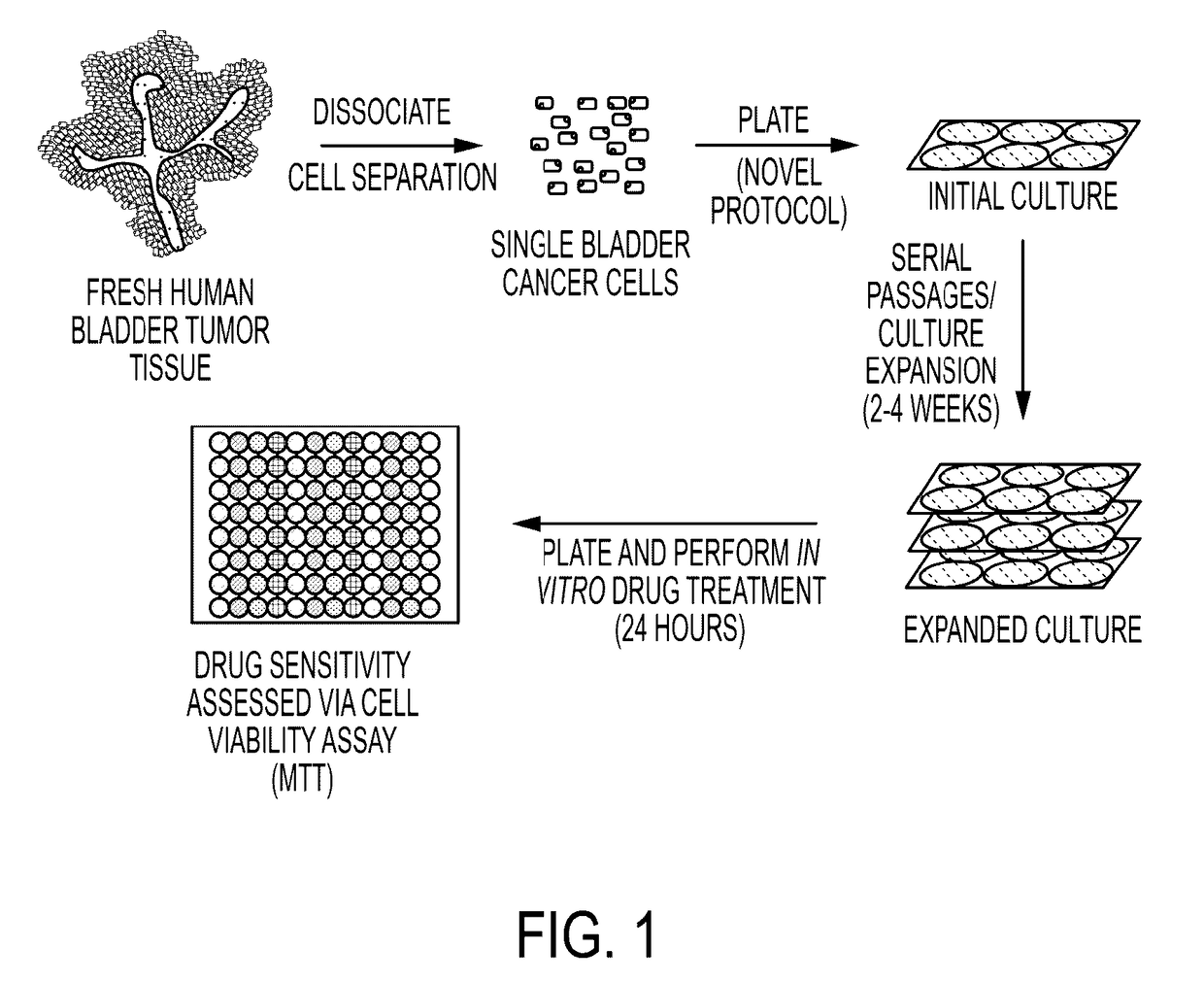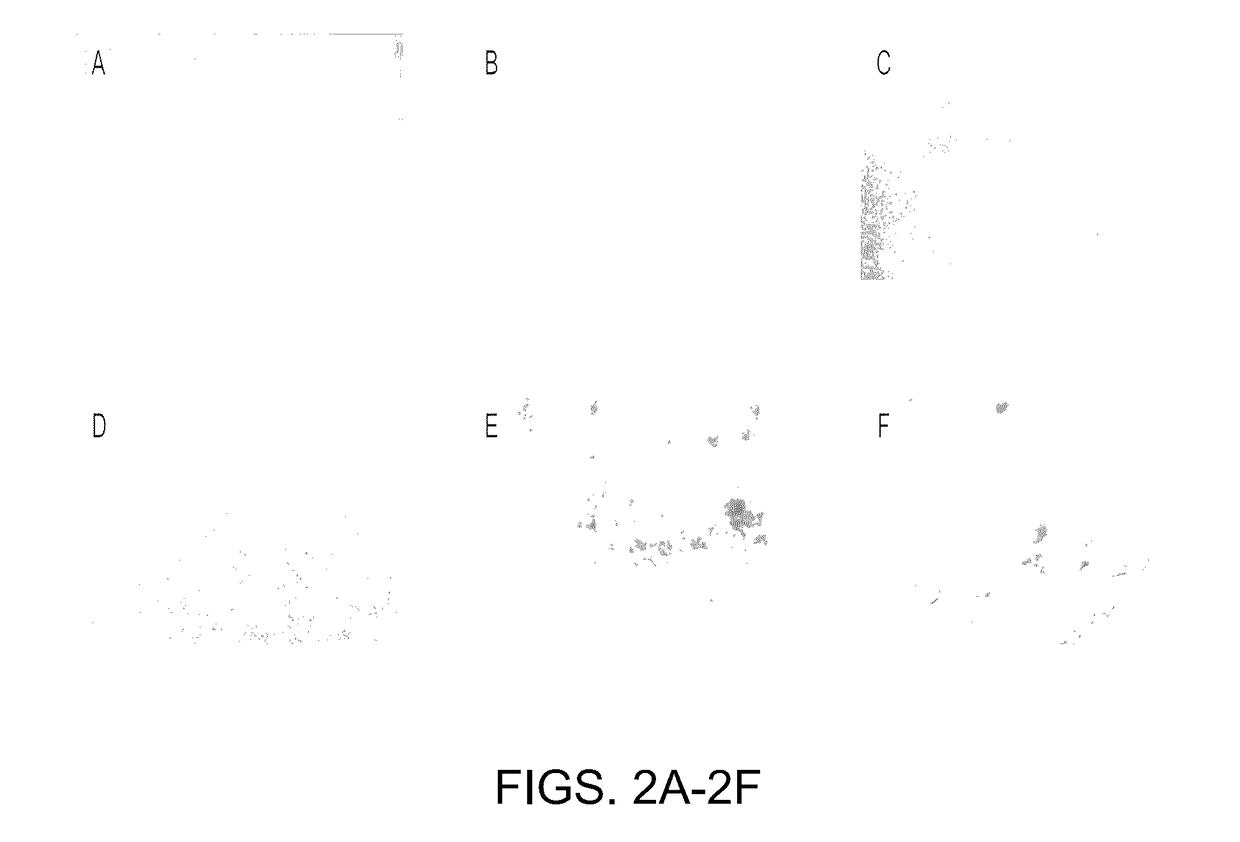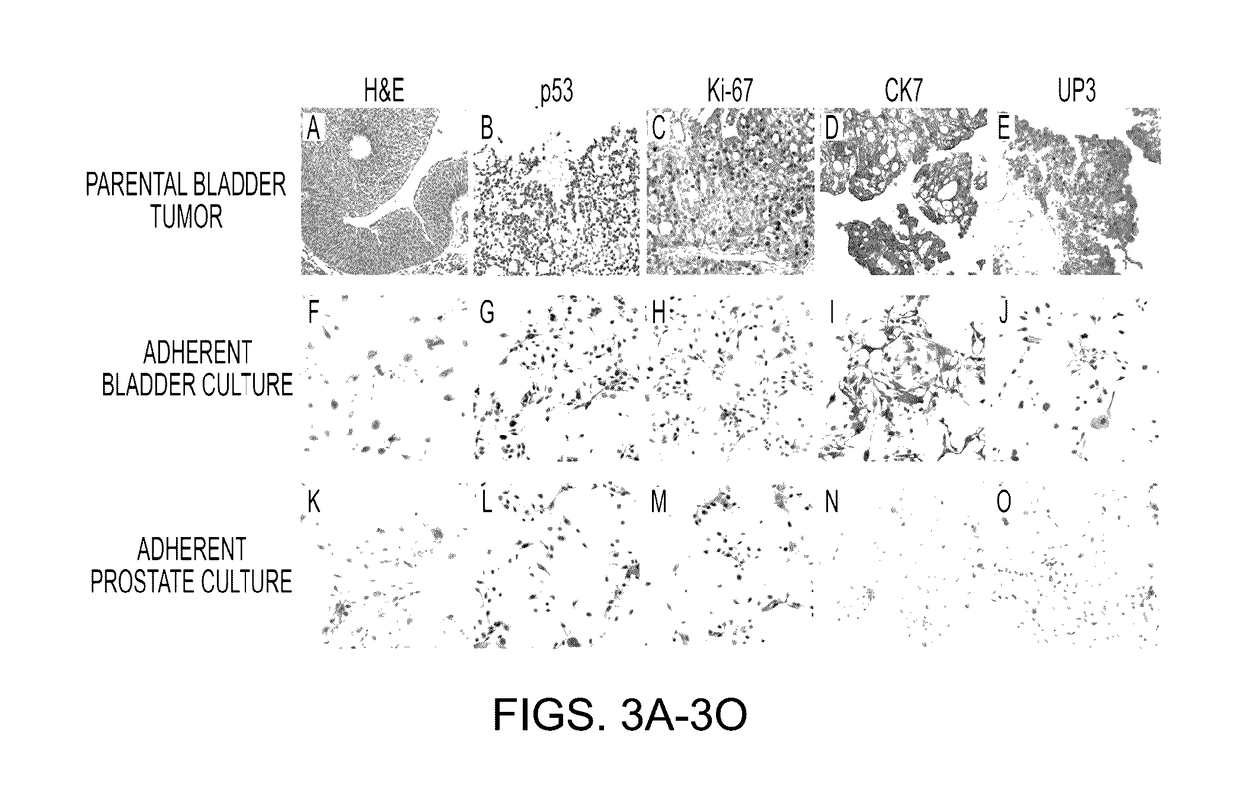Method for culture of human bladder cell lines and organoids and uses thereof
a human bladder and cell line technology, applied in the field of human bladder cell line and organoids culture, can solve the problems of no established method to predict whether or not an individual patient will many patients will not respond to intravesical therapy, and surgical removal of the bladder
- Summary
- Abstract
- Description
- Claims
- Application Information
AI Technical Summary
Benefits of technology
Problems solved by technology
Method used
Image
Examples
example 1
and Methods for Establishing Adherent Bladder Cell Cultures from Human Bladder Tissue
[0348]1.0 Introduction and Overview:
[0349]The protocol described herein is a new method for successfully establishing adherent culture from freshly-obtained human bladder tumor samples removed during routine endoscopic resection. The resected tumor tissue is dissociated into a single-cell suspension containing both epithelial and stromal cells. Epithelial cells are isolated from the parental population via immunomagnetic cell separation using antibodies against epithelial cell adhesion molecule (EpCAM, also CD326). The sorted epithelial cells are then seeded into 24-well plates in supplemented hepatocyte medium with 5% Matrigel. Once colonies have formed, these cultures can be serially passaged as well as frozen and thawed with resumed pre-freezing growth after thawing.
[0350]2.0 Materials
[0351]2.1 Specimen Preparation and Collagenase Digestion:
[0352]Freshly resected human bladder tumor tissue (0.1-2...
example 2
and Methods for Establishing Bladder Organoid
[0427]Cultures from Human Bladder Tissue
[0428]1.0 Introduction and Overview:
[0429]The protocol described herein is a new method for successfully establishing organoid culture from freshly-obtained human bladder tumor samples removed during routine endoscopic resection. The resected tumor tissue is dissociated into a single-cell suspension containing both epithelial and stromal cells. Epithelial cells are isolated from the parental population via immunomagnetic cell separation using antibodies against epithelial cell adhesion molecule (EpCAM, also CD326). The sorted epithelial cells are then seeded into 96-well low-attachment plates in supplemented hepatocyte medium with 5% Matrigel. Once organoids have formed, these cultures can be serially passaged as well as frozen and thawed with resumed pre-freezing growth after thawing.
[0430]2.0 Materials
[0431]2.1 Specimen Preparation and Collagenase Digestion:
[0432]Freshly resected human bladder tum...
example 3
dualized Approach to Bladder Cancer Treatment Using Patient-Derived Cell Lines to Predict Response to Chemotherapeutic Agents
[0521]Introduction:
[0522]Chemotherapy (both intravesical and systemic) can reduce the risk of recurrence and progression in various stages of bladder cancer. However, recurrence after treatment failure is associated with an increased risk of progression. There are currently no established methods for predicting patient-specific responses to treatment prior to drug selection. Described herein is the development of a new protocol for efficient establishment of cell lines from primary human bladder tumors, which enables in vitro drug sensitivity assays using chemotherapeutic agents.
[0523]Methods:
[0524]Using a tissue acquisition protocol, informed consent was obtained prior to specimen acquisition for all samples. Specimens were obtained during standard transurethral resection of papillary bladder tumors. Following generation of a single-cell suspension, epithelia...
PUM
 Login to View More
Login to View More Abstract
Description
Claims
Application Information
 Login to View More
Login to View More - R&D
- Intellectual Property
- Life Sciences
- Materials
- Tech Scout
- Unparalleled Data Quality
- Higher Quality Content
- 60% Fewer Hallucinations
Browse by: Latest US Patents, China's latest patents, Technical Efficacy Thesaurus, Application Domain, Technology Topic, Popular Technical Reports.
© 2025 PatSnap. All rights reserved.Legal|Privacy policy|Modern Slavery Act Transparency Statement|Sitemap|About US| Contact US: help@patsnap.com



